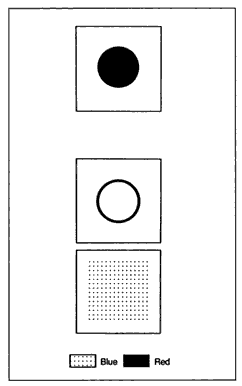
This Article From Issue
September-October 2001
Volume 89, Number 5
DOI: 10.1511/2001.34.0
The Executive Brain: Frontal Lobes and the Civilized Mind. Elkhonon Goldberg. xx + 251 pp. Oxford University Press, 2001. $29.95.
The Executive Brain is an intriguing exploration of the most challenging topic in cognitive neuroscience, the executive function of the prefrontal cortex. Author Elkhonon Goldberg begins with an account of his early training with the great neuropsychologist A. R. Luria. Goldberg then relates the suspenseful story of his escape from the Soviet Union, elegantly weaving into this a description of the role of the prefrontal cortex in coordinating the difficult and risky decisions he had to make during the venture. To make the functions of the "executive lobe" easier to grasp, he compares it to an orchestra conductor.
Goldberg describes in detail the clinical manifestations of damage to the prefrontal cortex and explains the vulnerability of this structure to such conditions as Alzheimer's disease, schizophrenia, attention deficit (and hyperactivity) disorder and Tourette's syndrome. He also gives his views on the role of the prefrontal cortex in controlling our will and our social and ethical behavior, including its role in antisocial and even criminal acts.
The book has many strengths. For every topic, the author provides a story or vignette of an interaction with a patient to illustrate the points he is making. He also offers provocative challenges to several scientific notions. For instance, in a challenge to the current trend toward fixed mapping of function into structure, which attributes to the hemispheres a static role in cognition (with the left hemisphere linked to language and the right to spatial processing, for example), Goldberg suggests that the right hemisphere is important for the processing of novelty and the left for the processing of cognitive routines. "What is novel today becomes routine tomorrow," he explains, and the relationship between the two hemispheres must therefore be dynamic, with cognitive control over any task gradually shifting from the right hemisphere to the left.

From The Executive Brain.
Goldberg also discusses forms of decision making that are often overlooked in laboratory studies of the prefrontal cortex. In veridical decision making, the goal is finding the truth, and there is a single correct solution; in adaptive decision making, an individual is choosing what is best for himself or herself and there can be no one right answer, since people's priorities vary. Using the cleverly designed Cognitive Bias Task (see illustration), he has demonstrated that the prefrontal cortex is critical for adaptive but not veridical decision making. In addition, he notes that individuals making adaptive decisions (choosing which image they like best) are usually consistent in adopting a strategy that is either context-dependent or context-independent. It turns out that men as a group have a subtle preference for context-dependent strategy (they match their choice to the target image); women, however, are more likely to have stable preferences (for blue rather than red, say, or circles rather than squares) regardless of the target. The context-independent strategy can be thought of as an "all-purpose" or "default" approach, whereas the context-dependent approach could be characterized as "custom tailored." Goldberg cautions that neither approach is inherently superior. In a relatively stationary environment, a context-independent strategy may be more advantageous, whereas a context-dependent strategy is preferable in a highly unstable environment. But in very unfamiliar or inherently complex situations, a context-independent approach is probably more prudent.
The one weakness I see in this book is its failure to take into account the whole role of emotion and feeling in human judgment and decision making. Victor S. Johnston argues in Why We Feel: The Science of Human Emotions that although we like to believe that we are logical beings who weigh pros and cons, we can never escape from our feelings, because they specify what is or is not in our biological best interest.
Indeed, Elkhonon's description of his escape from the Soviet Union illustrates this role of emotion and feeling in decision making very clearly. Goldberg made a series of decisions, including whether to complete his Ph.D. defense and whether to tell Luria about his escape plan. With every decision, he had no clue what choice was best. But, guided by "hunches" and "gut feelings," he managed to make, consciously or unconsciously, the most advantageous decisions.
The Executive Brain is a very effective introduction to the frontal lobes for students of psychology, philosophy, psychiatry, neurology and neuroscience. I will also recommend it to my family members and friends. The language is simple, the writing is lively and accessible, and the insights and ideas, which are rooted in state-of-the-art advances in cognitive neuroscience, have important social implications. I concur with the assessment in the foreword by Oliver Sacks that this is a remarkable book that addresses central problems forcefully.—Antoine Bechara, Neurology, University of Iowa College of Medicine, Iowa City
American Scientist Comments and Discussion
To discuss our articles or comment on them, please share them and tag American Scientist on social media platforms. Here are links to our profiles on Twitter, Facebook, and LinkedIn.
If we re-share your post, we will moderate comments/discussion following our comments policy.